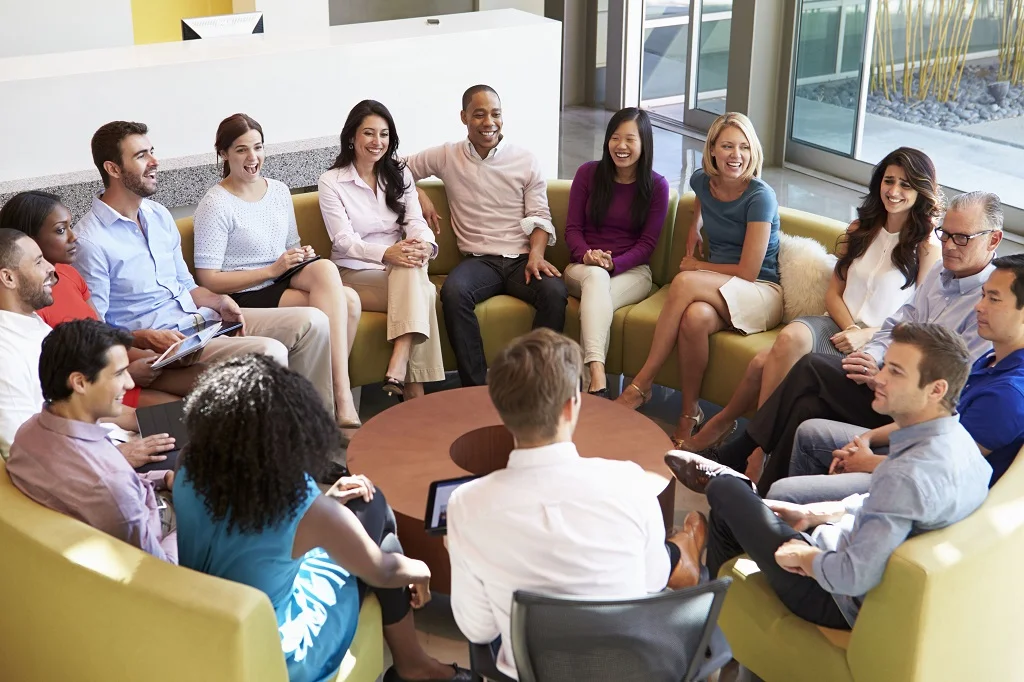In today’s office, desk dividers have come down. Bosses sit among their employees. Meeting rooms have glass walls.
A major goal of modern workplace design is improved productivity, engagement and innovation. And generally, research shows it works.
But while it might suit extroverts who thrive on the ability to share thoughts across a desk, there are plenty who would prefer some privacy. Only part of any workforce works better in an open-plan office and even some activity-based workspaces, with introverts accounting for between 30 percent to 50 percent of the workforce, according to the research arm of Steelcase, a U.S.-based furniture manufacturer.
“On a fundamental level, introverts require quieter and more private spaces than their extrovert counterparts. But in the rush to keep up with the trend of flexible, collaborative working over the past decade, enterprise mostly forgot about them,” says Gavin Phillips, Workplace Strategy and Innovation Director at JLL Asia Pacific.
“The result has been a ‘group think’ culture when companies create products and services, where the loudest voice and biggest personality often wins out, but evidence shows that the need to move from group, to individual thought improves our ability to innovate.”
Redressing the balance
Armed with this knowledge, company bosses are starting to redress the balance between the need to work collaboratively, versus the need to work anonymously and uninterrupted.
In Australia, the faculty of education offices at Melbourne’s Monash University opted for a progressive “combi-office” model, which combines the cellular-style office – in the form of 7.5 square metre allocated ‘focus pods’ for academics – with the open-plan office with desks for professional staff and higher degree by research students.
Meanwhile, when Corrs Chambers Westgarth became one of the first law firms in Australia to adopt collaborative working, it was at pains to ensure there were sufficient enclosed spaces for its employees to retreat to at any time.
“No solution is perfect,” says Dinesh Acharya, Head of Workplace Strategy at JLL Australia. “It’s a balancing act. And while spaces where acoustic and visual stimulation can be controlled are absolutely necessary for accommodating introverts, so is the flexibility to work from home. The approach should be all encompassing.”
Overdependence on extroverts
Society’s bias towards extroverts and the relative absence of private spaces, means the true value of introverts is rarely ever realised, says Susan Cain, author of Quiet: The Power of Introverts in a World That Can’t Stop Talking.
“Introverts recharge their batteries by being more on their own or in low-key environments, and extroverts recharge their batteries by being in spaces where there’s a lot going on,” she says. “So if introverts go into a space that’s too noisy or cacophonous, you’re placing extra cognitive load on their thought process that doesn’t need to be there, and shouldn’t be there if you want to get the best of everyone’s brain.”
So what makes for introvert-friendly spaces? Design features include the freedom to focus and innovate without interruption; the ability to control elements of their workspace, including sensory stimulation; and having a choice of places that provide complete privacy – the ability to be unseen and not see others.
Furnishings also make a difference whether natural materials like wood and wool to create a calming state of mind, bookshelves that hold tools to promote strategic thinking, home-style furniture, dimmable lights, stretching areas, and spaces to engage in deep conversation with colleagues. These won’t all necessarily be incorporated into the once space.
Not just introverts
While it would appear that introverts are beginning to reclaim their right to solitude in the office, evidence shows that from time to time even their non-introvert colleagues yearn for the same.
Some 30 percent of full-time employees in the U.S. feel they have to work away from their primary location to be truly productive, while 41 percent don’t have access to private places within their office to have a confidential conversation, Steelcase’s research shows.
“The end goal should be a company that people want to work for because of the value they put on company culture and environment. But as business priorities change along with external market drivers, and even a company’s workforce, the experience will need to be adapted. It’s a journey, not a destination,” concludes Phillips.

